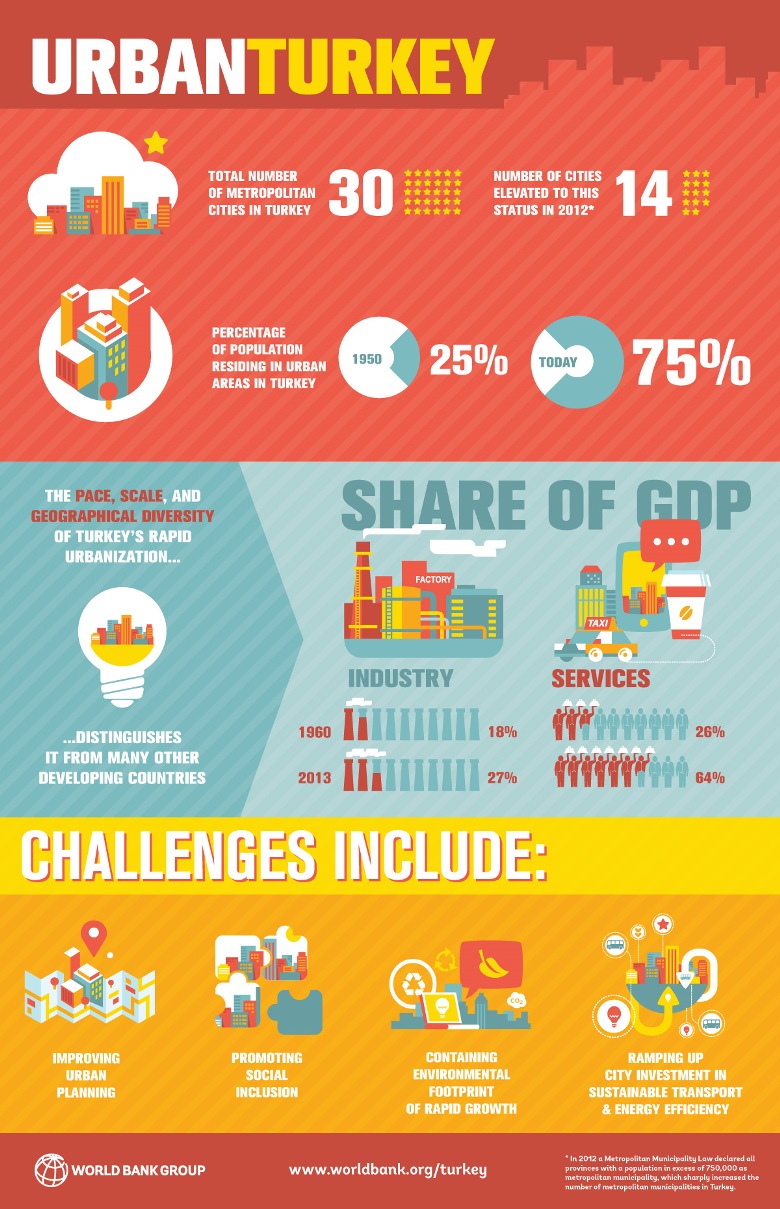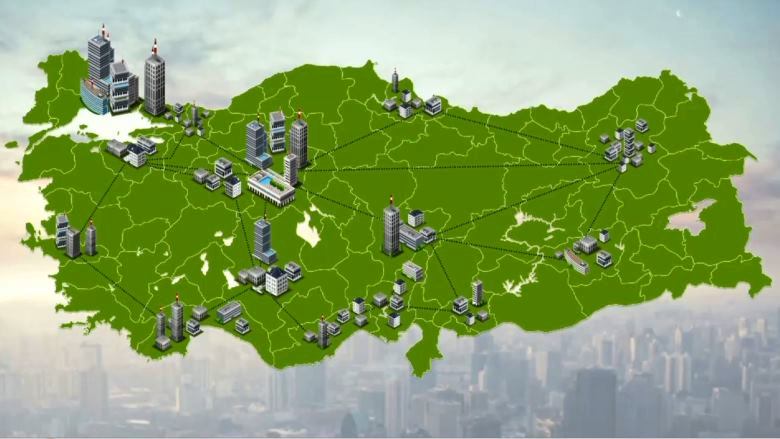Among the star performers in this regard is Turkey. Indeed, many developing countries today look to Turkey as a country that has effectively harnessed urbanization.
Over the past several decades, Turkey has transformed itself economically and spatially into the dynamic, industrially-competitive economy it is today. From 1960 to 2013, Turkey’s urban economies helped expand the country’s industrial contribution to GDP from just over 17% to 27%; the services sector rose dramatically from 26% to nearly 64%; and GDP per capita, in current US Dollars, rose from $1,567 in 1980 to $10,666 in 2012.
Over the last decade, this growth has helped create the jobs needed to dramatically reduce poverty. A new report by the World Bank is now taking a look at this process – analyzing key components and outcomes of this urbanization and highlighting best practices for other countries undergoing a similar transformation.
Turkey Urbanization Review: Rise of the Anatolian Tigers highlights salient features of Turkey’s urbanization process with the aim of extracting lessons learned for other developing countries.According to the report, the adoption of a metropolitan municipality law and regime in the mid-1980s was a prominent feature of Turkey’s emerging system of cities - facilitating the planning and management of cities in line with their economic footprint and across administrative boundaries.
"As this report documents, managing rapid urbanization may be the single most important policy issue for emerging market economies today," notes Ede Jorge Ijjasz-Vasquez, Senior Director for the Social, Urban, Rural, and Resilience practice at the World Bank.
"Turkey shows us how best to harness urbanization for economic gains, but it also highlights the persistent nature of urban management challenges, calling for better institutions to promote effective urban policy."
Early investments in connective infrastructure and settlement planning facilitated commercial activity that provided the lifeblood needed to areas - even remote ones - across the country. Access to housing was also a key feature in Turkey’s urbanization process. A scaling-up of the housing supply, through a brokering of the private sector, and the granting of amnesties to migrants in informal settlements provided an expanded housing stock and security of tenure for many low-income households.These and other measures contributed to the rise of the Anatolian Tigers – Turkey’s secondary cities that over the past decade have captured a larger share of newly established firms and urban population than the big three – Istanbul, Ankara and Izmir.
The report also outlines a second generation urban agenda that could help the country further benefit from this ongoing process of urbanization. Strengthened urban spatial planning will be necessary to avoid costly and inefficient sprawl. Greater attention will need to be paid to urban transport planning and greater investment made to help ease the transition to public transport - particularly in regards to reducing congestion in fast-growing cities.
Finally, concerted efforts need to be made in promoting civic engagement and social cohesion through more active public consultations.This unfinished agenda underscores the ongoing importance of effective urban policy to promote sustainable cities - in Turkey and across the developing world - and highlights the need for knowledge products such as Turkey Urbanization Review: Rise of the Anatolian Tigers.
Read full report


